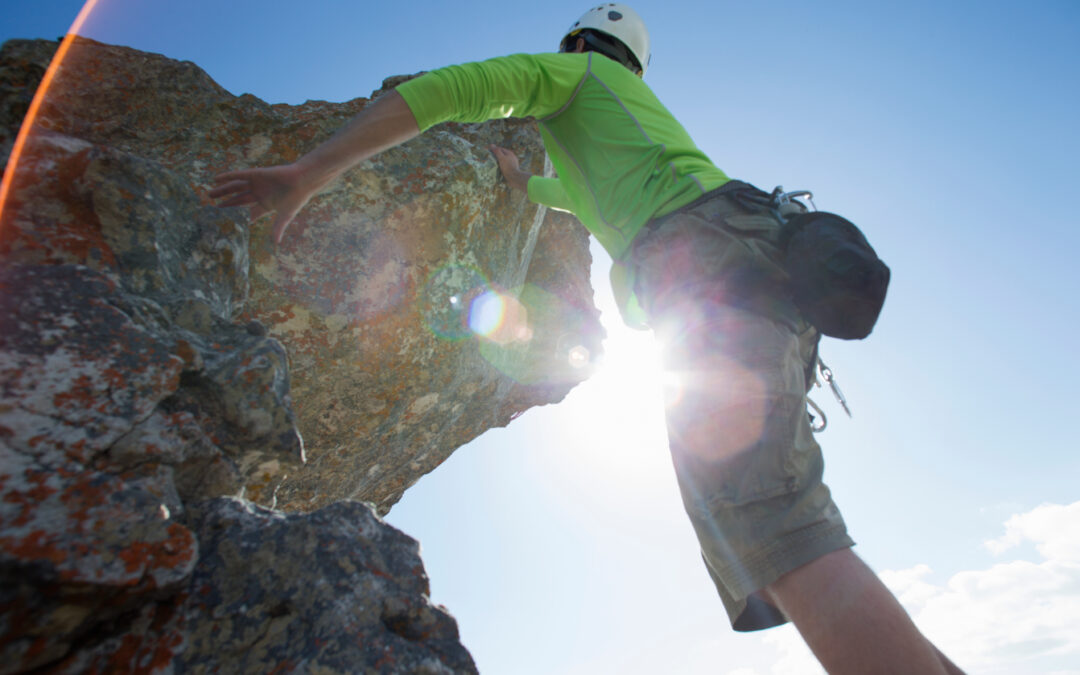Contents
1. Key Takeaways
2. What is Mountain Climbing Insurance?
3. Why Mountain Climbing Insurance is Essential
4. What Does Mountain Climbing Insurance Cover?
5. Standard Travel Insurance vs. Specialized Mountain Climbing Insurance
6. Top Mountain Climbing Insurance Providers
7. Altitude Restrictions and Coverage Limits
8. Cost of Mountain Climbing Insurance
9. How to Choose the Right Mountain Climbing Insurance
10. How to Purchase Mountain Climbing Insurance
11. FAQ
Key Takeaways
-
- Mountain climbing insurance is essential for high-altitude adventures as standard travel insurance typically excludes technical climbing and mountaineering activities
- Specialized policies cover emergency medical evacuation, helicopter rescue, trip cancellation, and gear protection for climbs above 10,000-20,000 feet
- Leading providers like Global Rescue, World Nomads, and IMG offer comprehensive coverage starting around $530 for major expeditions like Kilimanjaro
- Coverage must match your specific altitude limits and technical requirements, with some policies covering up to 6,000 meters for extreme mountaineering
- Emergency helicopter evacuation costs approximately $5,000 and requires proper documentation for insurance reimbursement claims
When a mountaineer collapses from altitude sickness at 19,000 feet on Mount Kilimanjaro, the emergency helicopter evacuation alone costs over $5,000. Without proper mountain climbing insurance, that climber faces devastating medical bills that standard travel insurance simply won’t cover.
Most adventure travelers discover too late that their regular travel insurance plans exclude technical climbing, high altitude trekking, and mountaineering activities. The moment you strap on crampons, tie into a rope, or ascend above certain elevation limits, you’ve ventured beyond the protection of conventional policies.
This comprehensive guide reveals everything you need to know about securing proper insurance coverage for your climbing adventures. You’ll discover which providers offer the most robust travel insurance coverage, how to match policies to your specific expedition requirements, and why investing in specialized mountaineering insurance can save you tens of thousands of dollars in emergency situations.
What is Mountain Climbing Insurance?
Mountain climbing insurance represents a specialized category of travel insurance designed specifically for high-altitude climbing and technical mountaineering activities. Unlike standard travel insurance coverage, these policies explicitly cover activities requiring ropes, crampons, ice axes, and other technical climbing equipment.
This specialized insurance provides essential protection for expeditions to famous peaks like Mount Kilimanjaro, Aconcagua, and the Seven Summits. The coverage extends far beyond what typical adventure activities insurance offers, addressing the unique risks of technical climbing at extreme altitudes.
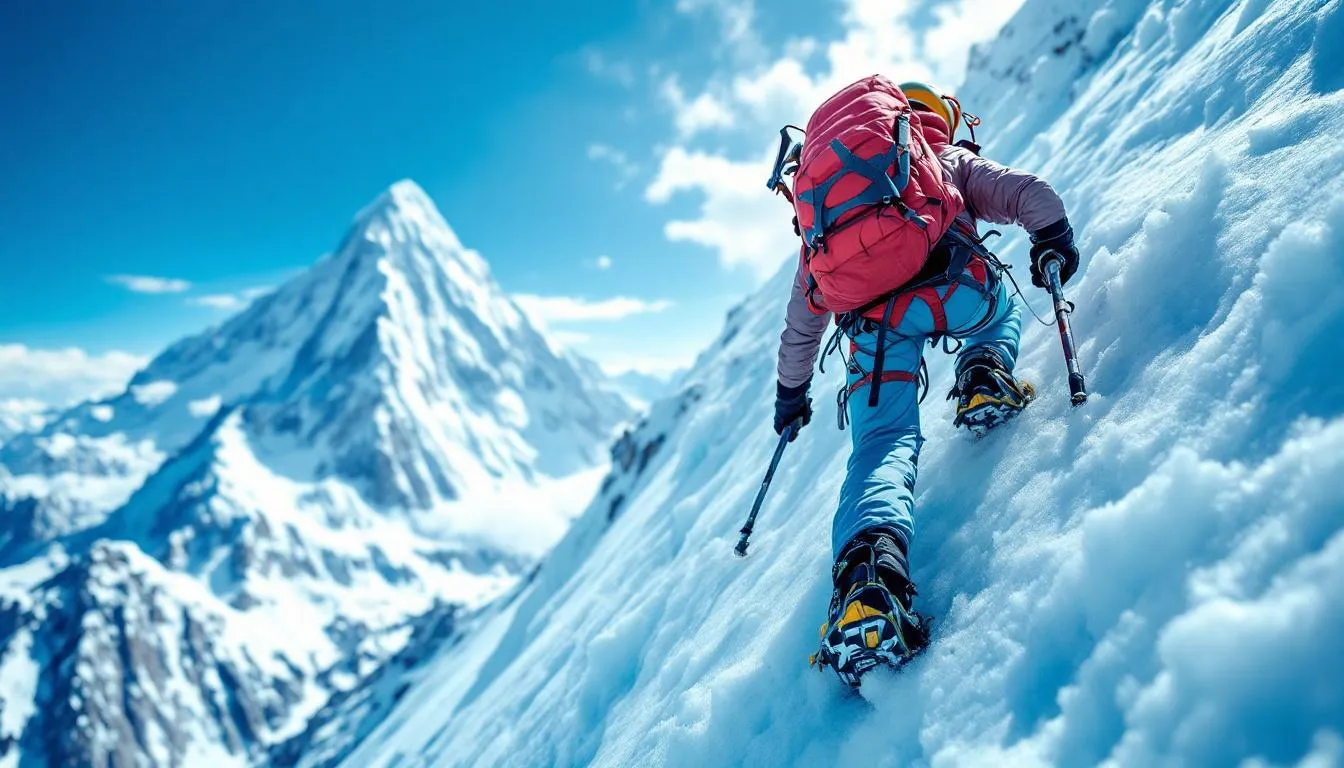
Professional mountaineering insurance recognizes that climbing trips involve inherently different risk profiles than conventional travel. These policies account for remote locations, extreme weather conditions, and the specialized rescue insurance requirements that technical climbing demands.
Why Mountain Climbing Insurance is Essential
Standard health insurance and travel policies systematically exclude high-risk mountaineering activities above certain altitudes, leaving climbers financially vulnerable during emergencies. Most domestic medical insurance plans provide no coverage for international climbing expeditions, while conventional travel insurance plans contain explicit exclusions for technical equipment use and high altitude activities.
Remote mountain locations require specialized emergency medical evacuation services unavailable through regular coverage. When climbing trips take you beyond road access and conventional emergency services, traditional medical evacuation becomes impossible. These remote areas demand helicopter rescue operations, specialized medical teams, and equipment designed for extreme terrain recovery.
The financial impact of mountain emergencies can be devastating without proper insurance coverage. Emergency helicopter evacuation costs approximately $5,000 for basic operations, with complex high-altitude rescues reaching $50,000 or more. International medical expenses for serious climbing injuries frequently exceed $100,000, particularly when emergency medical evacuation to advanced trauma centers becomes necessary.
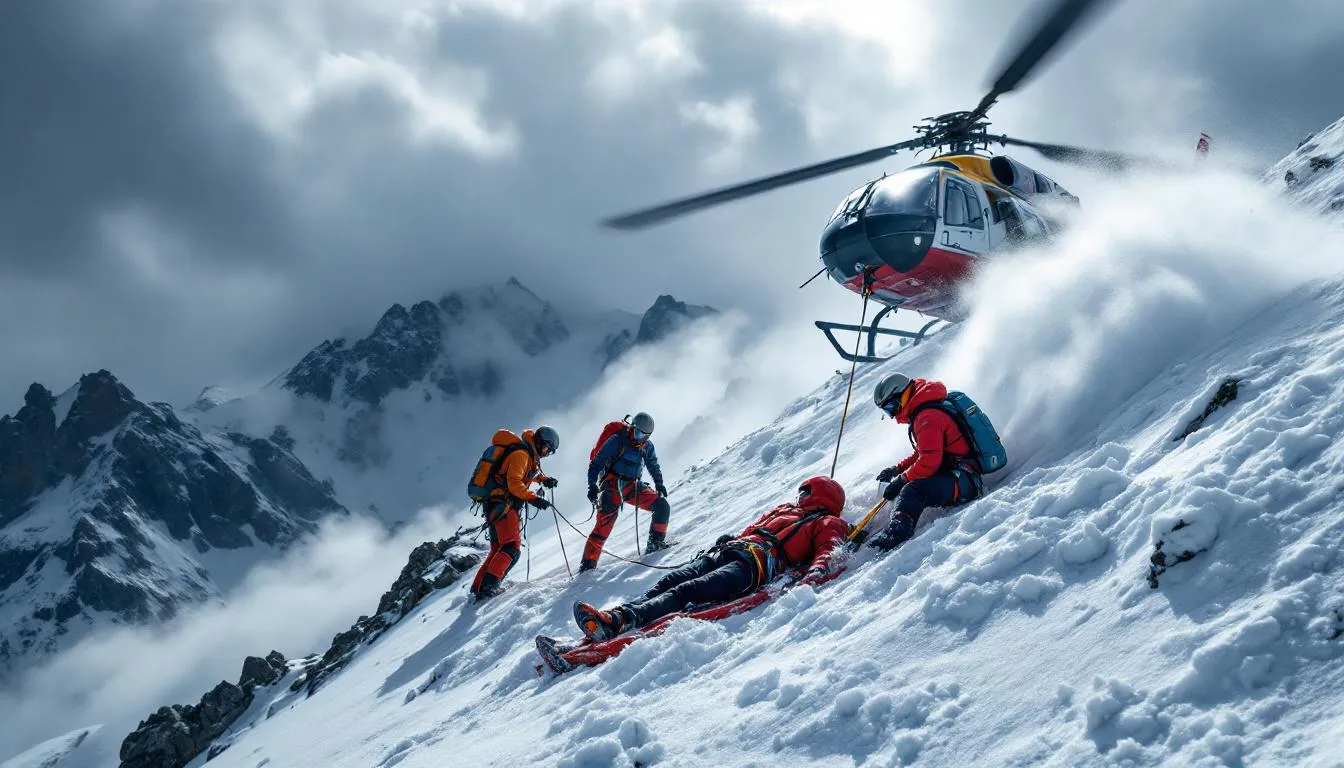
Legal requirements for guided expeditions and permits for major peaks like Denali and Everest often mandate specific insurance coverage. Many expedition operators require proof of comprehensive coverage including emergency evacuation before accepting clients. Without proper documentation, climbers may be denied access to guided climbing trips or official mountain permits.
What Does Mountain Climbing Insurance Cover?
Comprehensive mountain climbing insurance addresses the multiple risk categories that standard travel insurance policies exclude. These specialized policies recognize that climbing adventures involve unique hazards requiring tailored protection beyond conventional travel assistance.
Medical Coverage and Emergency Evacuation
Emergency medical expenses coverage forms the foundation of quality mountaineering insurance, protecting against altitude sickness, fractures, heart attacks, and hypothermia. These policies specifically include treatment for high-altitude pulmonary edema (HAPE), cerebral edema (HACE), and other elevation-related conditions that standard medical insurance often excludes.
Helicopter evacuation represents the most critical component of mountain climbing coverage. When climbers face emergencies in remote locations, helicopter rescue operations provide the only viable extraction method. Quality policies cover evacuation costs regardless of terrain difficulty or weather conditions, ensuring rapid transport to advanced medical facilities.
Ground evacuation by stretcher or rescue teams becomes necessary when helicopter access proves impossible due to weather or terrain. Comprehensive policies include coverage for technical rescue operations involving specialized teams, equipment, and extended evacuation timelines that can span multiple days.
Medical repatriation and transport to home country facilities with medical supervision ensures continuity of care for serious injuries. This coverage includes medical escort services, specialized transport aircraft, and coordination with home country medical providers for seamless treatment transitions.
24/7 emergency assistance hotlines and multilingual support teams provide critical coordination during crisis situations. These services connect climbers with local emergency services, coordinate evacuation logistics, and maintain communication with family members throughout emergency situations.
Trip Cancellation and Interruption
Reimbursement for non-refundable expedition costs protects against financial losses from illness, injury, or family emergencies that force trip cancellations. Quality policies recognize that climbing trips often involve substantial upfront investments that become completely lost when cancellations occur.
Coverage for trip interruptions caused by weather delays, natural disasters, or permit issues provides protection against circumstances beyond climber control. Mountain weather can force extended delays that create additional accommodation costs and rebooking expenses that quickly compound.
Protection against tour operator cancellations and bankruptcy safeguards against business failures that leave climbers stranded without services. When expedition companies face financial difficulties, comprehensive trip cancellation coverage ensures reimbursement for prepaid services.
Additional accommodation and rebooking costs for extended stays due to medical treatment address the reality that mountain injuries often require prolonged recovery periods. These policies cover unexpected expenses when medical complications prevent scheduled departures.
Gear Protection and Equipment Coverage
Compensation for lost, stolen, or damaged climbing equipment protects significant investments in specialized mountaineering gear. Quality policies recognize that technical equipment like ropes, harnesses, ice axes, and mountaineering boots represent substantial financial investments critical for expedition success.
Rental equipment coverage provides replacement gear when personal equipment becomes lost in transit or damaged beyond use. This protection ensures climbers can continue expeditions even when baggage loss or equipment failure threatens trip completion.
Coverage limits typically range from $2,500 to $10,000 for specialized mountaineering equipment, with higher limits available for professional climbers or extensive gear collections. These limits should align with actual equipment values to ensure adequate protection.
Protection for high-value items like GPS devices, satellite phones, and expedition cameras addresses the electronic equipment essential for modern climbing adventures. These specialized devices often exceed standard baggage coverage limits and require explicit inclusion in climbing equipment policies.
Standard Travel Insurance vs. Specialized Mountain Climbing Insurance
Standard travel insurance policies contain systematic exclusions for activities above 3,000-4,000 meters elevation, leaving most serious mountaineering expeditions completely unprotected. These altitude restrictions eliminate coverage precisely when climbers face the greatest risks and highest potential costs.
Technical climbing restrictions in regular adventure sports policies exclude activities requiring specialized equipment or techniques. The moment climbers use ropes for protection, employ ice axes for ascent, or traverse glaciated terrain, they’ve exceeded the boundaries of conventional adventure activities coverage.
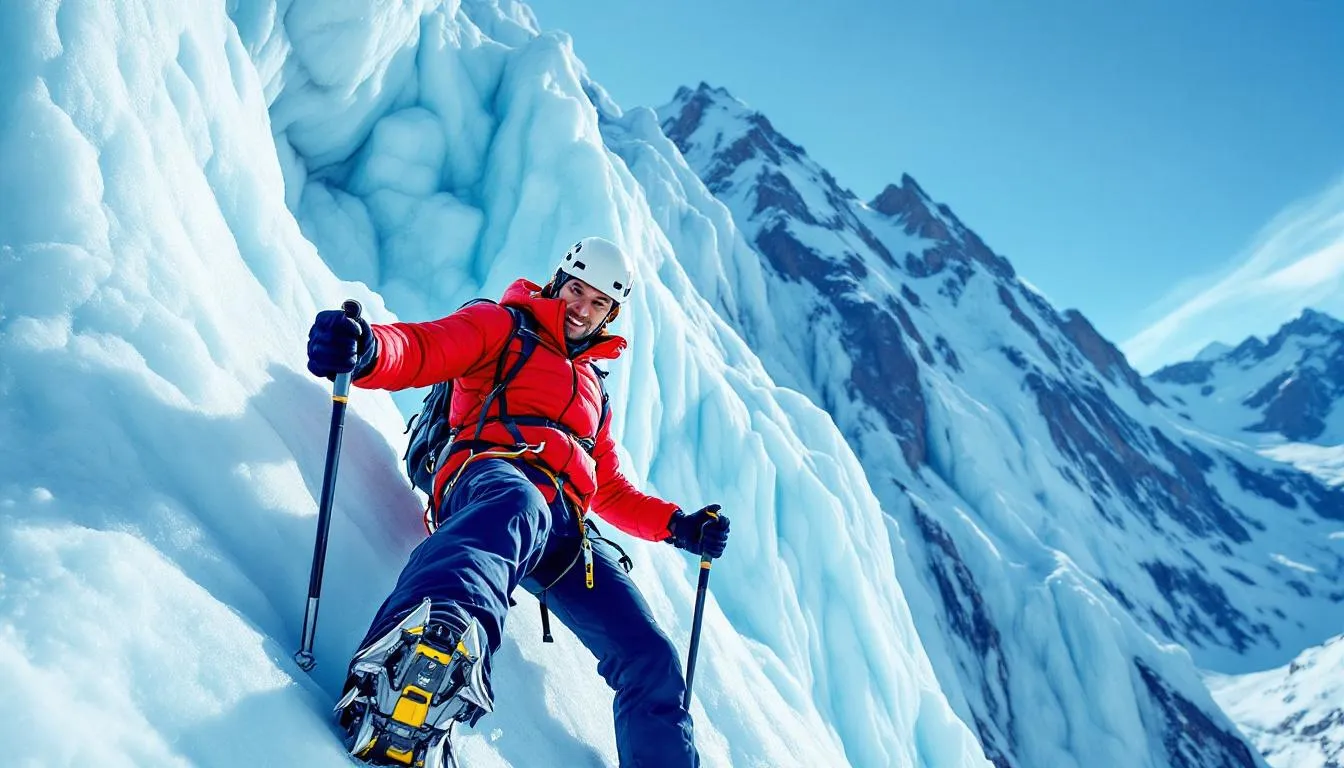
Specific mountaineering activities requiring specialized coverage include ice climbing on glaciers or frozen waterfalls, rock climbing with technical equipment beyond basic scrambling, and glacial travel requiring rope teams and crevasse rescue techniques. Standard policies explicitly exclude these activities regardless of altitude or location.
Geographic restrictions and coverage gaps in standard policies often exclude high-risk regions or areas experiencing civil unrest. Mountain ranges in developing countries or politically unstable regions may face complete exclusions that eliminate coverage for entire expedition destinations.
Top Mountain Climbing Insurance Providers
Selecting the right insurance provider requires understanding how different companies approach mountaineering coverage, with significant variations in altitude limits, technical activity definitions, and rescue capabilities.
Global Rescue
Global Rescue functions as the industry leader in emergency medical and rescue services for mountaineering expeditions, offering field rescue capabilities that extend far beyond traditional hospital-to-hospital transport. Their comprehensive coverage includes all Seven Summits except Antarctica, with no altitude restrictions that limit protection for extreme high-altitude climbing.
Field rescue capabilities distinguish Global Rescue from conventional medical evacuation services by providing extraction from the point of injury rather than requiring transport to medical facilities first. This approach proves critical for technical climbing situations where traditional ambulance services cannot reach injured climbers.
Partnership agreements with major expedition companies like Altezza Travel for Kilimanjaro climbs demonstrate industry recognition of Global Rescue’s specialized capabilities. These partnerships ensure seamless coordination between expedition operators and emergency services when rescue situations develop.
Global rescue membership costs start around $530 annually for comprehensive coverage, representing significant value considering the extensive rescue capabilities and global coverage area. Annual memberships provide year-round protection for multiple expeditions rather than trip-specific coverage.
World Nomads
World Nomads offers budget-friendly options through their Explorer Plan, which covers sport climbing, trad climbing, and ice climbing activities at substantially lower costs than specialized mountaineering providers. This approach makes quality coverage accessible for climbers with limited budgets or occasional expeditions.
Flexible policy extensions accommodate trip delays and itinerary changes that frequently occur during mountain expeditions. Weather delays, permit issues, or health concerns can extend trips beyond original schedules, and World Nomads provides coverage adjustments without penalty.
Coverage for climbing up to 6,000 meters requires proper technical equipment declarations but provides protection for most major peaks outside the Himalayas. This altitude limit covers destinations like Kilimanjaro, Aconcagua, and Denali while maintaining affordable premium costs.
Reliable claims processing and customer service support have established World Nomads as a popular choice among adventure travelers seeking dependable coverage without premium pricing. Their streamlined claims process and responsive customer support address issues quickly during stressful emergency situations.
IMG Travel Insurance
IMG provides Signature Travel Insurance plans that complement Global Rescue memberships by addressing trip cancellation, lost luggage, and medical expenses not covered by rescue-only services. This approach allows climbers to combine specialized rescue services with comprehensive trip protection.
Trip-by-trip coverage options suit climbers who don’t require annual memberships but need comprehensive protection for specific expeditions. These policies provide flexibility for occasional climbers or those planning single major expeditions.
Specialized mountaineering policies underwritten by established insurance carriers ensure financial stability and claims-paying capability during major incidents. IMG’s backing by major insurers provides confidence that coverage will be available when needed most.
Comprehensive coverage for technical climbing activities and high-altitude expeditions includes explicit protection for equipment use and altitude exposure that standard policies exclude. These policies recognize the technical nature of mountaineering and provide appropriate protection.
GEOS Alliance and Travelex Adventure Sports
GEOS Alliance provides rescue coordination services for remote expeditions with limited emergency services infrastructure. Their global network coordinates complex rescue operations in areas where conventional emergency services cannot operate effectively.
Travelex Adventure Sports Upgrade specifically serves US residents requiring specialized climbing coverage that exceeds standard travel insurance limitations. These upgrades provide explicit mountaineering protection without requiring complete policy replacement.
Premium customer service and 24/7 support for high-risk mountaineering activities ensure immediate response during emergency situations. Quality customer service becomes critical when coordinating complex rescue operations across international boundaries and language barriers.
Customizable plans allow climbers to select coverage based on specific expedition requirements and altitude limits rather than accepting standardized packages. This flexibility ensures appropriate protection without paying for unnecessary coverage elements.
Altitude Restrictions and Coverage Limits
Understanding altitude restrictions proves critical for ensuring valid coverage, as exceeding specified elevation limits automatically voids most insurance policies regardless of other coverage provisions. Common altitude restrictions create coverage tiers at 10,000 feet, 15,000 feet, and 20,000+ feet, with premium costs increasing substantially at higher elevations.
Specific elevation limits for popular destinations require careful policy matching to expedition plans. Mount Kilimanjaro reaches 19,341 feet, requiring policies that specifically cover elevations above 19,500 feet for adequate protection. Aconcagua’s 22,837-foot summit demands coverage above 23,000 feet, while Denali’s 20,310-foot elevation requires 20,500+ foot protection.
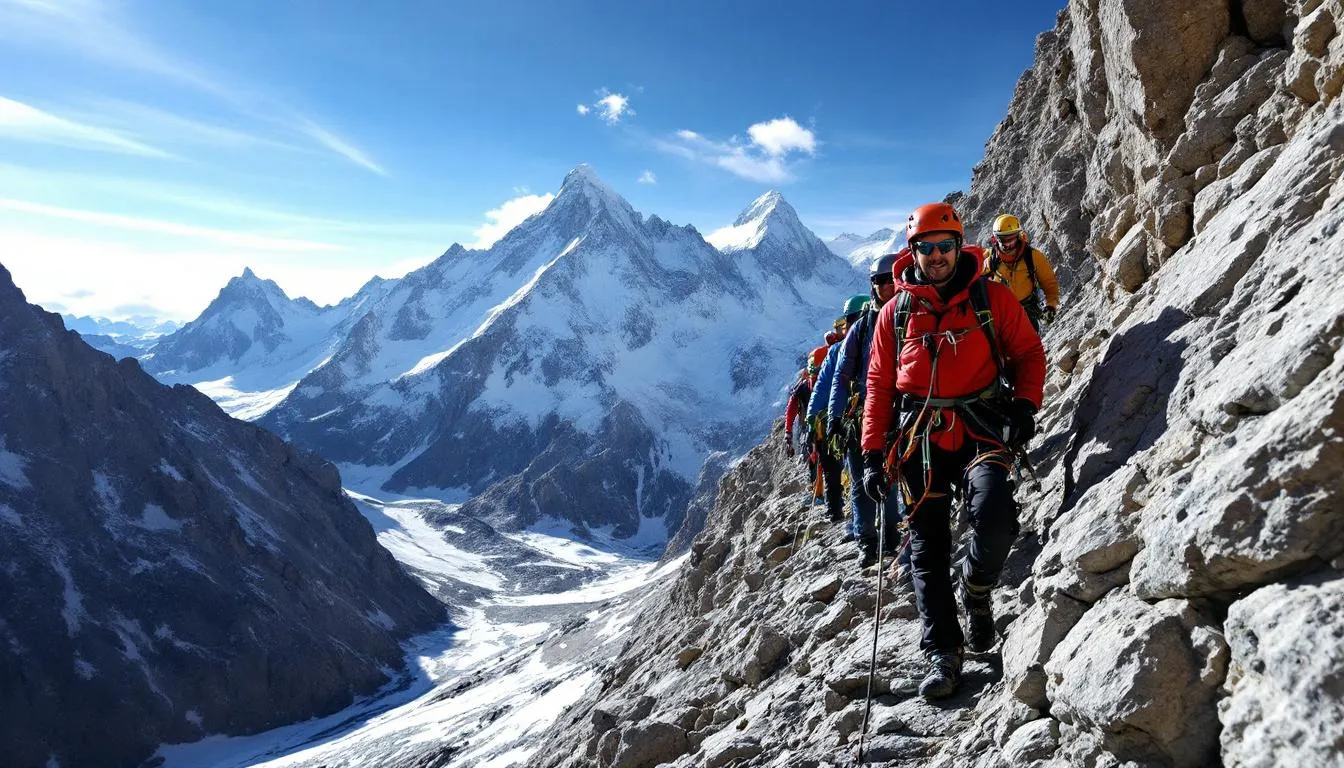
| Altitude Range | Typical Coverage | Common Destinations | Premium Impact |
| Below 10,000 feet | Standard adventure sports | Local peaks, basic mountaineering | Baseline rates |
| 10,000-15,000 feet | Enhanced adventure coverage | Mount Whitney, Mount Rainier | 25-50% increase |
| 15,000-20,000 feet | Specialized mountaineering | Kilimanjaro, Mount McKinley | 75-100% increase |
| Above 20,000 feet | Extreme altitude coverage | Aconcagua, Himalayas | 150%+ increase |
| Altitude Range | Typical Coverage | Common Destinations |
Premium Impact |
|---|---|---|---|
| Below 10,000 feet | Standard adventure sports | Local peaks, basic mountaineering |
Baseline rates |
| 10,000-15,000 feet | Enhanced adventure coverage | Mount Whitney, Mount Rainier |
25-50% increase |
| 15,000-20,000 feet | Specialized mountaineering | Kilimanjaro, Mount McKinley |
75-100% increase |
| Above 20,000 feet | Extreme altitude coverage | Aconcagua, Himalayas | 150%+ increase |
Age restrictions for mountaineering coverage typically limit eligibility to climbers under 65-70 years, with some providers offering limited coverage for older climbers at substantially higher premium costs. These restrictions reflect increased medical risks associated with age and altitude exposure.
Cost of Mountain Climbing Insurance
Mountain climbing insurance costs vary significantly based on multiple factors including climber age, destination altitude, trip duration, and technical difficulty levels. Understanding these cost drivers helps climbers budget appropriately and select coverage that balances protection with affordability.
Typical price ranges for comprehensive mountaineering coverage span $200-$800 for most expeditions, with costs increasing substantially for extreme altitude climbs or extended expeditions. Basic coverage for moderate altitude climbs might cost $200-$400, while comprehensive protection for major peaks can reach $800 or more.
Age-related premium increases become significant for climbers over 50 years, with costs potentially doubling for climbers over 60. Expeditions above 20,000 feet trigger additional premium surcharges that can increase costs by 50-150% regardless of climber age.
Annual membership options often provide better value for active climbers planning multiple expeditions yearly. Global rescue membership at $530 annually becomes cost-effective for climbers planning two or more major expeditions, while single-trip policies suit occasional climbers better.
Additional costs for gear coverage and enhanced medical evacuation limits can add $100-$300 to base policy costs depending on equipment values and desired coverage limits. High-value equipment collections or enhanced evacuation coverage justify these additional expenses for serious climbers.
| Policy Type | Typical Cost Range | Best For | Key Benefits |
| Basic adventure sports | $200-$400 | Moderate altitude climbs | Medical coverage, basic evacuation |
| Comprehensive mountaineering | $400-$600 | Major peaks, technical climbing | Full medical, rescue, trip protection |
| Premium expedition coverage | $600-$800+ | Extreme altitude, extended trips | Maximum limits, gear protection |
| Annual membership | $500-$700 | Multiple annual expeditions | Year-round coverage, unlimited trips |
| Policy Type | Typical Cost Range | Best For | Key Benefits |
|---|---|---|---|
| Basic adventure sports | $200-$400 | Moderate altitude climbs | Medical coverage, basic evacuation |
| Comprehensive mountaineering | $400-$600 | Major peaks, technical climbing | Full medical, rescue, trip protection |
| Premium expedition coverage | $600-$800+ | Extreme altitude, extended trips | Maximum limits, gear protection |
| Annual membership | $500-$700 | Multiple annual expeditions | Year-round coverage, unlimited trips |
How to Choose the Right Mountain Climbing Insurance
Matching coverage to specific expedition requirements involves analyzing altitude exposure, technical difficulty, trip duration, and potential cost exposures. Each expedition presents unique risk profiles that demand tailored insurance solutions rather than generic adventure sports coverage.
Reading policy fine print becomes essential for understanding climbing activity exclusions and equipment requirements that can void coverage. Policies often contain specific language about technical equipment use, altitude limitations, and activity definitions that determine claim eligibility.
Verifying coverage for guided versus independent climbing expeditions ensures appropriate protection for your specific climbing style. Some policies provide enhanced coverage for guided expeditions while restricting independent climbing, or vice versa.
Checking gear coverage limits against personal equipment value prevents inadequate protection for expensive mountaineering equipment. Specialized technical equipment can easily exceed standard baggage coverage limits, requiring explicit gear protection riders.
Ensuring 24/7 emergency assistance availability in expedition destination countries proves critical for coordinating rescue operations. Emergency services must be accessible from your specific climbing location and capable of coordinating with local rescue authorities.
Key selection criteria include:
-
- Altitude compatibility with planned summit elevations plus safety margin
- Technical activity recognition for your specific climbing style
- Geographic coverage including political stability considerations
- Evacuation capabilities appropriate for destination remoteness
- Financial limits matching potential exposure levels
- Claims process efficiency and customer service quality
Consulting with expedition operators provides valuable insights into recommended insurance providers and coverage levels based on destination-specific requirements. Experienced operators understand local rescue capabilities and insurance requirements that may not be obvious to individual climbers.
How to Purchase Mountain Climbing Insurance
The online purchase process requires detailed expedition information including passport details, travel dates, destination information, and specific climbing activities planned. Accurate disclosure ensures proper coverage and prevents claim denials due to misrepresentation.
Essential documentation includes expedition itinerary with altitude details, guide certifications for guided climbs, equipment lists for gear coverage, and medical clearance for high-altitude climbing. Complete documentation streamlines the purchase process and establishes coverage validity.
Timing considerations prove critical for maximizing benefits, with optimal purchase windows falling within 14-30 days of initial trip deposits. Early purchase often provides enhanced trip cancellation benefits and ensures coverage for pre-departure medical issues.
Working with licensed insurance representatives helps navigate complex expedition requirements and ensures appropriate coverage selection. Professional guidance becomes particularly valuable for extreme altitude climbs or technically demanding expeditions.
Group coverage coordination with tour operators can provide cost savings and simplified administration for organized expeditions. Many expedition companies offer preferred insurance partnerships that provide enhanced coverage at reduced costs.
Purchase steps include:
- Research providers based on altitude and activity requirements
- Compare coverage options and pricing for your specific needs
- Gather required documentation including itinerary and medical clearance
- Complete application with accurate activity and destination disclosure
- Review policy documents thoroughly before departure
- Download emergency contact information and keep accessible during expedition
FAQ
Does mountain climbing insurance cover solo expeditions without guides?
Most mountain climbing insurance policies cover solo expeditions, but coverage may be limited compared to guided climbs. Some providers require additional documentation for solo climbs above certain altitudes or in particularly remote areas. Independent climbers should verify their policy specifically covers unguided technical climbing and that emergency evacuation services can locate and extract solo climbers. Certain extreme altitude or technical climbing areas may require guided expedition participation for coverage validity.
What happens if I need emergency evacuation but don’t have proper insurance documentation?
Without proper insurance documentation, climbers face immediate payment requirements for emergency evacuation services, which can cost $5,000-$50,000 or more. Emergency services may refuse to initiate rescue operations without payment guarantees or valid insurance verification. In remote international locations, rescue organizations often require upfront payment or confirmed insurance coverage before deploying expensive helicopter or technical rescue resources. Climbers should always carry physical and digital copies of insurance certificates and emergency contact information.
Are there any mountains or regions completely excluded from all mountaineering insurance policies?
Yes, certain regions face universal exclusions due to active warfare, extreme political instability, or government travel warnings. Areas like active war zones, regions under international sanctions, or destinations with official government “do not travel” advisories are typically excluded by all providers. Additionally, some insurance companies exclude coverage for climbing in areas without established rescue infrastructure or where local authorities prohibit rescue operations. Antarctica expeditions often require specialized coverage through expedition operators rather than standard mountaineering insurance.
Can I purchase mountain climbing insurance after my trip has already started?
Most insurance providers require policy purchase before departure from your home country, making post-departure purchases impossible through traditional channels. However, some companies offer limited “already traveling” coverage with restrictions and waiting periods. These policies typically exclude pre-existing conditions, provide reduced coverage limits, and may not cover activities planned before purchase. Travel insurance designed for already traveling individuals often costs significantly more and provides substantially less protection than pre-departure coverage.
How do insurance companies verify that my climbing activity qualifies for technical mountaineering coverage?
Insurance companies verify technical mountaineering activities through detailed itinerary review, equipment requirements, altitude verification, and sometimes guide certifications. Claims investigations may include reviewing GPS data, expedition logs, guide reports, and medical records to confirm activity classification. Policies typically define technical climbing by specific equipment use (ropes, crampons, ice axes), altitude thresholds, and terrain characteristics. Misrepresentation of activities can void coverage entirely, making accurate disclosure during purchase critical for valid claims.
Get a quote now and get ready to pack!


